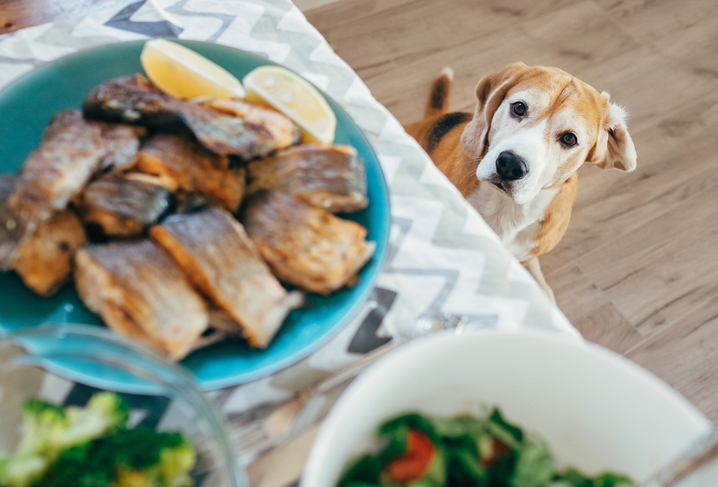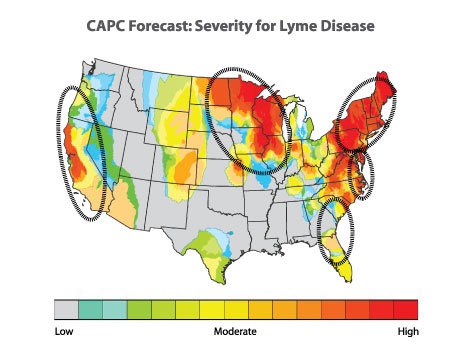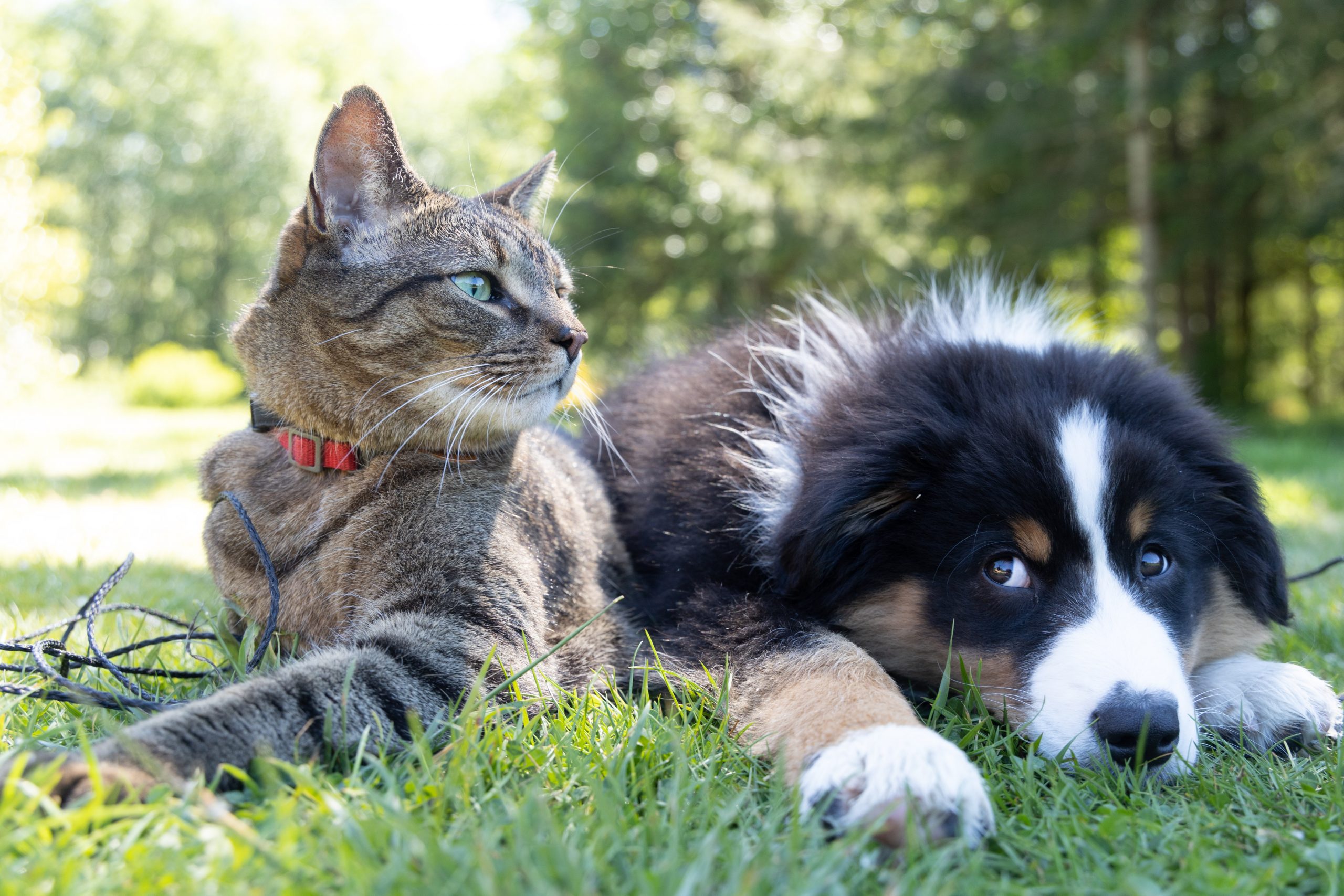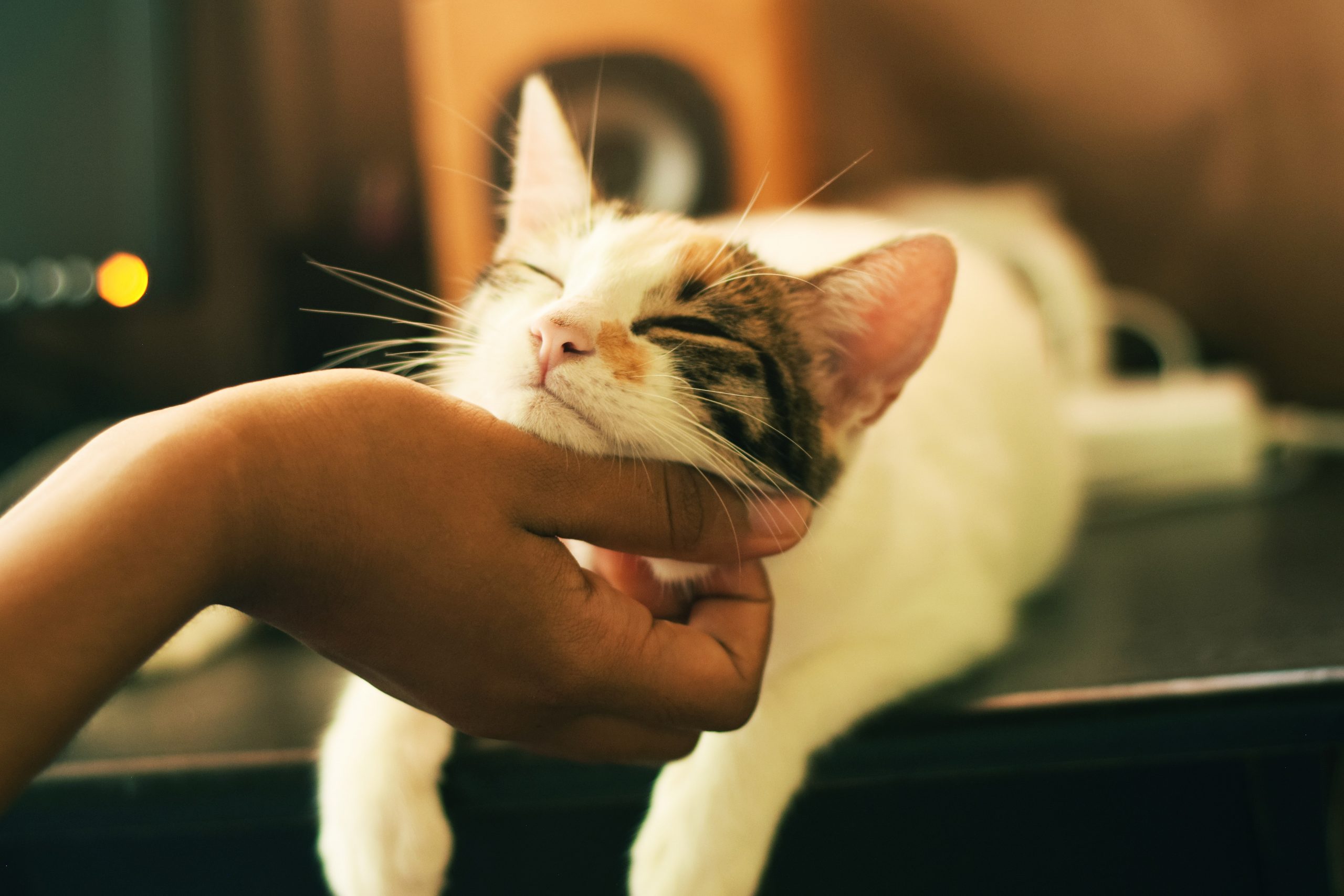Can My Pet Eat That?

Pet Food Safety and Pet Nutrition. We love our pets! And loving them sometimes means giving in to the look for our human food. You know the look! However, some foods are particularly dangerous for our pets and can cause stomach upset, seizures or even death. Be aware of what is toxic and take action to ensure your pets are not digesting dangerous human delights!
Pet Food Safety – A 2025 Guide
Grapes and Raisins: These can cause kidney damage, kidney failure and even death. While not every pet will react the same way, it is best to avoid them.
Artificial Sweeteners: Xylitol, a popular sweetener found in gum, candy and even some diet versions of peanut butter, is deadly. It can causing insulin spikes and drops in blood sugar resulting in seizures, shock and eventual death. Some low fat peanut butters even contain xylitol so be sure to read labels well. Be extra cautious leaving items that contain it in reach of your pet.
Garlic: While controversial because of the possible health benefits for dogs, Garlic has been known to have severe consequences for pets. It can cause the liver to recognize red blood cells as damaged, resulting in anemia, lethargy, difficulty breathing and even death.
Avocados: Avocados are safe for dogs but toxic to birds, cows, sheep, horses and goats. Birds show signs of difficulty breathing and swelling while cattle, sheep, horses and goats can have digestive problems and breast infections from ingestion.
Chocolate: The chemical theobromine is the culprit in chocolate that causes many problems for pets. The darker and purer the chocolate, like baker’s chocolate for example, the higher the level of theobromine. It causes hyperactivity, cardiac arrhythmia, seizures and sometimes death.
Caffeinated Beverages: Coffee, tea and soda containing caffeine are toxic for your pet and her pet nutrition. Large doses cause heart arrhythmias, seizures, vomiting, diarrhea and even coma.
Bacon and Ham: High in fat, bacon and ham can cause vomiting, diarrhea and pancreatitis. Pancreatitis can be very serious and lead to hospitalization.
Cooked Bones: Surprisingly, cooked bones are NOT good for your pet and her pet nutrition. They splinter easily and can puncture the gastrointestinal tract causing peritonitis. The only solution is surgery. If you must feed bones to your pet, feed raw bones. They are available at many local grocery stores from the meat department.
Pitted Fruits: The pits in fruits such as peaches, plums and nectarines contain the poison cyanide. They are also the perfect size for getting lodged in the gastro intestinal tract.
Rhubarb: The leaves of the rhubarb plant can cause a drop in blood calcium levels. This results in salivation, tremors, lethargy, loss of appetite and possibly kidney failure.
Macadamia Nuts: An unknown toxin in macadamia nuts can cause vomiting, weakness, tremors, fever and lethargy.
Onions: Onions contain a chemical called thiosulphate. Thiosulphate causes red blood cells to burst, resulting in hemolytic anemia. Hemolytic Anemia shows up after a few days with symptoms like diarrhea, vomiting, breathlessness, lethargy and sometimes even death.

Sugar: Sugary, high fat sweets are never good for your pet. They can cause pancreatitis and particularly in dogs, lead to diarrhea, decreased appetite, lethargy and abdominal pain.
Raw Fish: Raw fish has been known to cause a Vitamin B deficiency in pets. This deficiency could result in seizures. Fish that are most toxic include salmon and trout. Some fish, like salmon, can also carry parasites that can be deadly if not treated properly.
Raw Meat: While controversial, raw meat can be dangerous if infected with bacteria such as e. coli, or salmonella. If you feed raw meat to your pets, get the highest quality possible to avoid infection.
Dairy Products: After puppyhood, most dogs can no longer digest dairy, being lactose intolerant. Too much milk can cause diarrhea and vomiting. Cheese has less lactose than milk so small bites are tolerable to most pets.

Did you find this article about pet food safety, useful? Would you like 100% free access to more articles like these, and free access to over 5,000 vetted pet care service professionals throughout the United States? Sign up here for a free Petworks account, and take 10% off your first booking, on us!
The Bottom Line On Pet Food Safety
While it’s tempting to share our treats with our pets, think twice about what you are putting in their mouth. What is delicious to us could be deadly for them.
If you want to go the extra mile and hire a professional, you can book a clinical pet nutritionist on Petworks. Dozens of top nutritionists throughout the United States are available to help your beloved pets get and stay healthy.
About the Author: Cyndie Anderson, Owner and Chief Pet Lover at Pooch Pros Pet Care Services LLC

Originally from the Shenandoah Valley, I have been in Northern Virginia for 21 years. I left the corporate world in 2000 to stay at home with my two stepdaughters. After becoming an empty nester I went back to work in retail part time. Once I had done that for about a year I felt like I wanted to do something different. There are two things I am really passionate about: music and dogs. I decided to take my love for dogs and start Pooch Pros Pet Care Services. Having previously worked for a pet sitting service, I knew this would be a perfect fit for me. I now employ 5 independent contractors and we service 45 customers. Mama to two fur babies: Target, a 14-year-old mixed breed and Jeeves, a 9-year-old Maltese.
 In 2021, Dr. Marty Goldstein DVM joined the pet care platform Petworks as an advisor in its Animal Nutrition care division. Dr Marty Nature’s Blend is on a mission to help your pets live their healthiest lives possible. Dr. Marty’s pet nutrition expertise and guidance has helped Petworks evolve and become the preeminent animal and pet nutrition consultation service for pet parents in North America.
In 2021, Dr. Marty Goldstein DVM joined the pet care platform Petworks as an advisor in its Animal Nutrition care division. Dr Marty Nature’s Blend is on a mission to help your pets live their healthiest lives possible. Dr. Marty’s pet nutrition expertise and guidance has helped Petworks evolve and become the preeminent animal and pet nutrition consultation service for pet parents in North America.
 In 2022, Blue Buffalo Founder Bill Bishop Jr. joined Petworks as Senior Advisor in our Animal Nutrition Care Division. Bill brings his extensive expertise in pet food innovation and business leadership. His guidance helps Petworks enhance our pet nutrition service offerings, helping to ensure that pet parents throughout the world receive trusted, science-backed nutritional support for their dogs, cats, and animals.
In 2022, Blue Buffalo Founder Bill Bishop Jr. joined Petworks as Senior Advisor in our Animal Nutrition Care Division. Bill brings his extensive expertise in pet food innovation and business leadership. His guidance helps Petworks enhance our pet nutrition service offerings, helping to ensure that pet parents throughout the world receive trusted, science-backed nutritional support for their dogs, cats, and animals.
 Petworks Co-Founder Kevin Kinyon is a life-long animal lover who works tirelessly to improve the lives of pets and their parents. Human and animal qualities he values most are integrity, humor, and empathy.
Petworks Co-Founder Kevin Kinyon is a life-long animal lover who works tirelessly to improve the lives of pets and their parents. Human and animal qualities he values most are integrity, humor, and empathy.
Keeping Pets Safe From Ticks Year-Round

Tick bites on dogs and cats. Ticks. the word alone is enough to make any pet owner shudder. These tiny, blood-sucking parasites transfer nasty illnesses like the notorious Lyme Disease: a dangerous infection that can cause everything from muscular to neurological problems in animals and humans.
Ticks were once known to hitch a ride on your dog after a hike in the woods – but with the U.S.’s growing population and ever-changing landscape, the bugs are spreading their location, too. What can you do to keep your furry friends (and yourself) safe from ticks? We’ve answered some of the top questions below.
“Are my pets at risk of a tick-bite?”
Do you live in the United States? Does your pet spend time outside? If so, then the safe answer is yes: your pet is at risk of a tick bite. Of course, there are many factors that affect the true likelihood of a tick bite, and what effect it’ll have on your pet.
One of these factors is location. Ticks can be found in virtually every county across the U.S., but are much more prevalent in areas like the Northeast and the Western coastline. If you live in a heavily wooded area or an area surrounding fresh water, you’re more susceptible than others. Ticks, especially the Lyme disease-carrying Deer Ticks, thrive in shady, moist areas, the edges of woods, and even stone walls. If you and your pet live in an apartment, you’re less at risk than someone on the edge of a pond – but tick-borne diseases can be spread by exposed animals who physically transport ticks themselves.
Spring has sprung in the United States. Above is a 2025 map developed by the Companion Animal Parasite Council to showcase the Lyme prevalence forecasted for the United States.
 Northeast On High Alert
Northeast On High Alert
You’ll notice the Northeast is the highest risk, with over 10% of counties housing ticks with disease-causing bacterium. The semi-good news is that the chilly Northeast temperatures cause tick species to lay low until warmer spring weather.
Another important factor, of course, is the species of pet you have. When we think ticks, we think dogs – but there are other pets at risk of getting hurt by a tick bite. Cats, though fortunately highly resistant to Lyme Disease, can develop other tick-related issues like Hemobartonellosis: a bacterial parasite linked to life-threatening anemia. Other domestic animals are no better off than dogs. Horses, goats, and even cows are susceptible to Lyme and other tick-related diseases. If you have chickens, though, here’s some news that’ll unruffle your feathers: chickens actually eat ticks! Perhaps it’s time to consider raising your own backyard chickens.
“What can I do to prevent a tick bite?”
It’s never bad to prevent your pet from dangerous tick bites, and there are a few options for doing so. The simplest first step to take: give your pet a full body scan after spending time outdoors. This includes checks after walks in the yard or the park, and especially after spending any time near wooded areas.
For those with grass yards, make sure to keep your grass at a low height to avoid tick hot-spots. Keep your yard free of debris, including leaf and wood piles, as these become homes for the pesky parasites.
 Spray For Ticks
Spray For Ticks
If your land borders heavy shrubbery or trees, it may be worth the extra step to have your yard sprayed. Hire a professional to apply a perimeter insecticide treatment to your yard, but first be sure that any outdoor pets and their food supplies (like hay or feed) are safely out of the way. Clean and treat any of your pet’s favorite shady hang out spots, like under decks and trees. Using cedar mulch is another great, natural way to keep ticks at bay. The wood repels ticks, and even fleas, so considering using it around your yard, under decks, and in flower beds.

Did you find this article useful? Would you like 100% free access to more articles like these, and free access to over 5,000 vetted pet care service professionals throughout the United States? Sign up here for a free Petworks account, and take 10% off your first booking, on us!
Physical Preventatives
Of course, caring for your environment is only one step to keeping your pet safe. It’s also important to arm your pet with physical preventative measures.
- Tick Prevention For Dogs: Tick collars, like these from Seresto and Sentry, are effective in repelling and killing ticks prior to biting. For a natural solution, geranium oil is safe to apply on a dog’s collar. Topical applications, like Frontline Plus, can be used on the fur to kill ticks and larvae and to prevent others for 30 days. Chewable doses, like NexGard, can be given orally for similar prevention.
- Tick Prevention For Cats: Tick collars, like one from Advantage II, will repel and kill ticks. Topical applications, like Frontline Plus, can be used on the fur to kill ticks and their larvae, and repel others for 30 days.
- Tick Prevention For Horses: Spray or wipe on insect repellant containing cypermethrin or permethrin prior to riding.
- Tick Prevention for Cattle, Sheep, Goats, and other livestock: Apply a spray-on or dust-on insecticide to prevent ticks, lice, and other pesky bugs. Many are approved for use on lactating animals, and are safe to use during milk production.
“My pet got bit! How do I remove a tick?”
Even with the best preventative measures, it’s not always easy to keep the teeny terrors away from your pets. If you find a tick on your pet, stay calm. Grab some gloves and a pair of fine point tweezers, and grab the tick as close to your pet’s skin as possible. Gently pull up with a straight, steady motion, so as not to leave the tick’s head embedded in the skin. After the tick has been removed, clean the bite-site with rubbing alcohol, then be sure to wash your hands and disinfect the tweezers.
What are post tick-bite symptoms to look out for?
If your dog, cat, or other pet has been bitten by a tick, keep an eye out for lethargy, vomiting, loss of appetite, loss of muscle movement, and rapid heart rate. These can be signs of harmful, or even deadly, infections like Tick Fever and Lyme Disease.
If your pet, particularly dog, appears to be “stuck” sleeping or in a comatose state, this is a sign of Tick Paralysis. Symptoms of tick-related illnesses can take between days and even months to appear, so if you begin to notice any unusual symptoms, visit your local veterinarian, or go to Petworks for pet care services
They’re tiny, but their impact is mighty. Don’t take the risk with ticks – start preventative measures early to keep your beloved companions safe through every season!
 In 2021, Dr. Marty Goldstein DVM joined the pet care platform Petworks as an advisor in its Animal Nutrition care division. Dr Marty Nature’s Blend is on a mission to help your pets live their healthiest lives possible. Dr. Marty’s pet nutrition expertise and guidance has helped Petworks evolve and become the preeminent animal and pet nutrition consultation service for pet parents in North America.
In 2021, Dr. Marty Goldstein DVM joined the pet care platform Petworks as an advisor in its Animal Nutrition care division. Dr Marty Nature’s Blend is on a mission to help your pets live their healthiest lives possible. Dr. Marty’s pet nutrition expertise and guidance has helped Petworks evolve and become the preeminent animal and pet nutrition consultation service for pet parents in North America.
 In 2022, Blue Buffalo Founder Bill Bishop Jr. joined Petworks as Senior Advisor in our Animal Nutrition Care Division. Bill brings his extensive expertise in pet food innovation and business leadership. His guidance helps Petworks enhance our pet nutrition service offerings, helping to ensure that pet parents throughout the world receive trusted, science-backed nutritional support for their dogs, cats, and animals.
In 2022, Blue Buffalo Founder Bill Bishop Jr. joined Petworks as Senior Advisor in our Animal Nutrition Care Division. Bill brings his extensive expertise in pet food innovation and business leadership. His guidance helps Petworks enhance our pet nutrition service offerings, helping to ensure that pet parents throughout the world receive trusted, science-backed nutritional support for their dogs, cats, and animals.

Navigating Pet End of Life Care

by Dr. Dani McVety, Founder and CEO of Lap of Love Veterinary Hospice.
There comes a day when every pet parent has to come to terms with their pet’s passing. This unfortunately means making the difficult decision between a “natural death” or humane euthanasia. I imagine just about everyone would like their pet to comfortably crawl into their bed one night, drift off to sleep, and pass away peacefully while sleeping. While many people think this defines a “natural death,” that isn’t necessarily the case—and a natural death does not always guarantee a peaceful death. In Home Pet Euthanasia.
Your Guide to Adopting a Dog or Cat

By Alex Eaton, owner of Healing Bay Pet Nutrition.
Adopting a Dog or Cat. Congratulations! You have made the wonderful decision to adopt a furry family member. It’s an exciting feeling, but figuring out the next steps can be a little daunting — especially for those new to pet parenting. Whether you’re adopting a new fluffy puppy or a senior kitty, here are some important tips and tricks you need to know to build a strong relationship with your new pet — and ensure they have proper care from the moment they arrive home.
How to Find the Perfect Pet Sitter

by Kathryn Cockrell, Owner of Happy Hound Pet Sitting.
It’s a high stakes situation — you’re leaving your pets and home in the care of a complete stranger. Don’t get me wrong, in-home pet sitters are incredible — but it’s essential that you do your homework before handing over the keys to the castle. Here are a few important considerations when hiring a new pet sitter.

